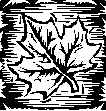 |
Concepts of Biology (BIOL116) - Dr. S.G. Saupe; Biology Department, College of St. Benedict/St. John's University, Collegeville, MN 56321; ssaupe@csbsju.edu; http://www.employees.csbsju.edu/ssaupe/ |
 |
Concepts of Biology (BIOL116) - Dr. S.G. Saupe; Biology Department, College of St. Benedict/St. John's University, Collegeville, MN 56321; ssaupe@csbsju.edu; http://www.employees.csbsju.edu/ssaupe/ |
The Plant Way of Life: Study Guide
GOAL:
The goal of this unit is to provide an introduction to the study of plants and
to develop an understanding of what it means to be a plant.
OBJECTIVES:
Upon completion of this unit you should be able to:
Distinguish
a plant from an animal
Discuss
the significance of autotrophism in the plant way of life
Discuss
the probable evolutionary pressures for motility
Discuss
the consequences of being non-motile.
REQUIRED
READING:
course notes; in addition, it includes
material from chapters 34, 35, 37, 38.
SUPPLEMENTAL REFERENCES: Check out some of the references cited in the Plant Way of Life notes. Most are available in the filing cabinet in the botany lab. Especially check out the articles by Becker and Darley. None of these are �required�, but they will provide useful information. The Private Lives of Plants video series by David Attenborough, which is available in the Alcuin Library, is also excellent.
IMPORTANT TERMS/CONCEPTS: (can you use these conversationally?)
|
|
|
QUESTIONS
FOR THOUGHT AND STUDY:
Why
are plants important?
Compare
and contrast autotrophs and heterotrophs.
Discuss
the consequences of being autotrophic. How have plants responded to life as
autotrophs?
Briefly
summarize the five major consequences of sedentary, autotrophic life. How
have plants responded to each?
What
is a positioning mechanism? Provide some examples.
How
do plants exploit their environment? Consider dendritic form, asexual
reproduction, indeterminate growth, heterophylly,
foraging and architectural design in your response.
Compare
and contrast animals and plants in terms of body design (i.e., architectural
vs. mechanical design).
Discuss
some of the mechanisms by which plants sense changes in the environment. Why
are these important?
Identify
some of the physical and biological threats to plants. How do plants protect
themselves from these dangers?
How
do plants find a "mate" and disperse offspring?
Discuss
some of the problems unique to the plant way of life. In general how have
plants responded to each of these problems?
Think
about the statement "Plants are smarter than you think!"
Identify
the characteristics of the plant kingdom.
Autotrophs
are typically non-motile and heterotrophs are typically motile.
Why did evolution favor this situation?
Explain
why leaves are broad and flat.
Compare
animals and plants in terms of nutrients (type, concentration, location).
Explain
why plants are not limited by size.
From
a botanical perspective, some corals can be considered heterotrophic plants.
Explain.
Explain
why coral is only found in relatively shallow, clear water.
Identify
the specialized structures (and their function) that plants use for
autotrophism.
Is
a carnivorous plant autotrophic?
Describe
some pollination vectors/mechanisms.
Describe
some fruit dispersal systems.
Explain
why plants are dendritic, but animals are not.
In
what way is a tree like a coral colony?
In
what regard do plants forage for food? Identify some foraging strategies.
| | Top| SGS Home | CSB/SJU Home | Biology Dept | Biol116 Section Home Page | Concepts Home Page | Disclaimer | |
Last updated: January 05, 2004 � Copyright by SG Saupe